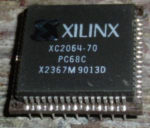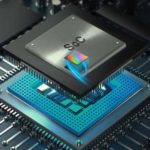You are currently viewing SemiWiki as a guest which gives you limited access to the site. To view blog comments and experience other SemiWiki features you must be a registered member. Registration is fast, simple, and absolutely free so please,
join our community today!
The AMD acquisition of Xilinx is certainly big news but as an insider looking at the media coverage I think there are a few more points to consider. While most of the coverage has been positive there will always be negatives and we can look at that as well.
Intel acquired Altera in 2015 for $16.7B at a 50% premium which was a major disruption… Read More
Harry Foster and I started in semiconductors at the same time so it was great to reminisce while talking about the latest Wilson Research Group Functional Verification Trend reports. Before I get into the reports lets talk about Harry who is a verification superstar:
Harry is Chief Scientist Verification for the Design Verification… Read More
Since the start of PROMS, PLDs and FPGAs we have learned the importance of programmability in modern semiconductor design. Today we have eFPGAs for “design adaptive” embedded programmability and that is what this webinar is all about.
Several key points are discussed starting with the Law of Accelerating Returns as it applies… Read More
A Field-Programmable Gate Array (FPGA) can implement arbitrary digital logic, anything from a microprocessor to a video generator or crypto miner. An FPGA consists of many logic blocks, each typically consisting of a flip flop and a logic function, along with a routing network that connects the logic blocks. What makes an FPGA… Read More
Did you know you can save 30% to 60% power without spending a fortune on a process migration? There is a better way than moving to deeply scaled nodes for power. Read on…
Have you heard of AGGIOS? You will. The name stands for AGGregated IO Systems, and a team of ex ARM and Qualcomm engineers are re-inventing power management. I’ll explain… Read More
Blogging is not an easy thing to do. It takes time, patience, commitment, and creativity. SemiWiki brought blogging to the semiconductor industry and many companies have followed. Very few have been successful with personal or corporate blogs but as a premier semiconductor blogger I have developed a proven recipe over the last… Read More
S2C has been developing FPGA prototyping platforms since 2003, and, over time, their FPGA prototyping platforms have supported increasingly larger more sophisticated FPGA prototyping projects with three key attributes; 1) scalable prototyping gate capacities, 2) a high-speed interface between the FPGA prototype and software… Read More
Achronix came to SemiWiki in 2017 and we added a chapter on the history of Achronix in our update version of “Fabless: The Transformation of the Semiconductor Industry”. So yes we know quite a bit about Achronix and the FPGA business so it was a pleasure to do a CEO Q&A with Robert Blake. First lets take a look at his … Read More
eFPGA is now widely available, has been used in dozens of chips, is being designed into dozens more and it has an increasing list of benefits for a range of applications. Embedded FPGA, or eFPGA, enables your SoC to have flexibility in critical areas where algorithm, protocol or market needs are changing. FPGAs can also accelerate… Read More
We started working with Felx Logix more than eight years ago and let me tell you it has been an interesting journey. Geoff Tate was our second CEO Interview so this is a follow up to that. The first one garnered more than 15,000 views and I expect more this time given the continued success of Flex Logix pioneering the eFPGA market, absolutely.… Read More










